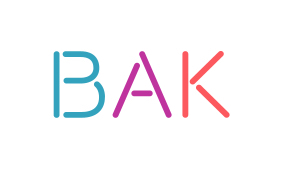Information
-
Audit Title
-
Conducted on
-
Prepared by
-
Location
HOUSEKEEPING
-
Are all electrical cords and ropes kept out of walking aisles?
-
Are hoses, cables, wires, etc. kept off floors and stored when<br><br>not in use?
-
Are scraps, debris and waste stored in work area as to prevent accumulation of materials that present hazards for tripping, fire, explosion or pests?
-
Are obstacles kept away from stairways, doorways, around corners, and on floors?
-
Are sidewalks & ramps free of defects (e.g., – cracks, breaks, holes, spalling)?
-
Are walking surfaces kept, clean, dry or appropriate means taken to assure the surfaces are slip-resistant?
-
Is anti-skid adhesive tape used on ramps?
-
Is reflective tape used on stairs and areas that drop to lower levels?
-
Is there adequate lighting on all walkways, stairs, hallways, ramps, and dock areas?
-
Are all bulbs and light fixtures in working order?
-
Are heavy items stored low enough to prevent falling on people and for lifting injury prevention and safety?
-
Are cooking or unapproved heat producing devices (i.e., hotplate, microwave) prohibited in the work area?
-
Are employees prohibited from smoking, eating, or storing beverage in the paint shop?
-
Is there a lack of undue accumulation of dust or dirt?
SUPERVISOR
-
Does the supervisor ensure that all employees know and adhere to safety requirements in the paint shop operation?
-
Does the supervisor ensure that only properly qualified employees use the sprayers and other equipment in the shop?
-
Does the supervisor ensure that PPE is used properly, and ensures employees are not to taking "short cuts"?
-
Are the proper warning/caution signs in a language which the entire workforce can understand?
-
Does the supervisor have a current emergency and evacuation plan that has it been communicated to the employees?
-
Is training provided and documented on the following topics: HAZCOM, PPE, spill response, fall protection, standard operation procedures, electrical and ladder safety?
PERSONAL PROTECTIVE EQUIPMENT
-
Is all required personal protective equipment (PPE) (e.g., hearing protection, eye and face protection, hand protection) available and in good condition for all paint shop painters?
-
Is all protective equipment maintained in a clean, functioning condition and ready for use?
-
Are adequate work procedures, protective clothing and equipment provided and used when cleaning up spilled toxic or otherwise hazardous materials or liquids?
-
Are employees who need corrective lenses in workplaces with harmful exposures, required to wear only approved safety glasses, or use medically approved precautionary procedures
-
Are approved safety glasses required to be worn at all times in areas where there is a risk of eye injuries form flying chips, splinters, sparks and other solid materials?
-
Are protective goggles or face shields worn over safety glasses where there is any danger of chemical splashes?
-
Are employees trained in the proper use of PPE (Personal Protective Equipment)?
-
Are respirators regularly inspected, maintained, and stored in a sanitary manner?
-
s hearing protection (e.g., ear plugs or muffs) properly worn when workplace noise levels exceed the Department’s occupational exposure limits?
-
Are hard hats provided and worn where the danger of hitting the head exists?
-
Are hard hats free of damage to the shell and suspension system?
-
Is appropriate foot protection required where there is the risk of foot injuries from falling objects, crushing, or hot, corrosive, or toxic substances? does it fit properly?
-
Are chemical-resistant gloves worn to prevent skin contact with harmful chemicals? (e.g., solvent-based glues, paints and thinners, fuels, acids)
-
Are proper respirators available ad worn by employees exposed to airborne chemical substance hazards? (e.g., high concentrations of dusts, chemical or solvent vapors)
-
Is there a schedule to replace the cartridges in chemical respirators?
-
Are all employees who wear respirators clean-shaven?
HAZARD COMMUNICATION
-
Are employees trained on the Hazard Communication protection program?
-
Are employees trained in the hazards of chemicals and the procedures for their safe use, spill, clean-up, and disposal?
-
Is a current Safety Data Sheets (SDS) available to all employees?
-
Is there a SDS inventory and does contain all items in the paint shop? Is it readily available to all employees
-
Are all hazardous containers labeled appropriately?
-
Are the correct containers used to store hazardous materials? No food/drink containers
-
Are hazardous chemicals properly stored? (i.e., flammable lockers, segregated from incompatible sources, labeled with legible identity and warnings)?
-
Are all containers undamaged and leak and spill proof?
-
Are all portable chemical containers labeled with the name of the product and its physical and health hazards?
-
Are all hazardous containers stored appropriately and away from walkways and heat sources?
-
Are hazardous liquids stored below eye level?
-
Are hazardous wastes (primarily solvents and paints containing heavy metals) disposed of properly in accordance guidance?
LIFE SAFETY AND MEDICAL RESPONSE
-
Is the emergency eyewash station and/or shower unit easily accessible?
-
Can the emergency eyewash station and shower unit be reached within 10 seconds?
-
Is the emergency eyewash station and shower unit located on the same level as the hazard and the path of travel free of obstructions that may inhibit immediate use?
-
Are emergency eye wash facilities that provide a flow rate of 0.4 liters for 15 minutes located within the work area as the hazard?
-
Are emergency eye wash and shower stations activated weekly for a period long enough to verify operation and ensure flushing fluid is available?
-
Are emergency eye wash and shower equipment inspected annually?
-
Is the first aid kit easily accessible?
PAINT SHOP SAFETY
-
Are paint or solvent-soaked rags placed into a covered metal container?
-
Is explosion-proof lighting in good condition with no broken globes or covers?
-
Are sources of ignition (flames, sparks, electric motors) kept at least 20 feet (6.1 meters) from the paint booth?
-
Are containers of flammable and toxic chemicals kept closed when not in use?
-
Is there adequate ventilation when painting indoors?
-
Are flammables cabinets, other storage devices, fans, or other equipment properly secured so that there is little risk of their falling over?
-
Is all brush/roller painting, using solvent based (flammable) Paints, conducted in an open well-ventilated area?
-
Is pressure release from paint gun so to prevent buildup of pressure in the container when used?
-
Are body parts prohibited from entering the paint gun pattern?
-
Are paint containers kept tightly sealed and closed when not in use?
-
Is paint only used from labeled containers? (Missing or illegible labels are reported)
-
Are solvents for cleaning operation restricted to those with flashpoints less than 100 deg °F. (37.7 °C)?
-
Are signs posted prohibiting smoking, flames, and sparks displayed within 20 feet (6.1m, 610cm) of the booth?
-
Are cleaning operations using flammable or combustible solvents conducted inside spray booths, with the ventilating equipment operating during the cleaning procedure?
TOOL SAFETY
-
When in use, are extension cords visible and not running across highly trafficked areas?
-
Are the correct extension cords being used for the job? Select cords that are rated to handle the wattage of the devices with which will be used
-
Is compressed air used in cleaning limited to 30 psi?
-
Are all nozzles and hoses inspected prior to each use?
- Yes
- No
- N/A
-
Are GFCI’s used for all portable electrical hand tools?
-
Are tools and machines designed for a fixed location securely anchored to prevent walking or moving?
-
Are all electrical machinery and appliances grounded?
-
Do supervisors and employees frequently inspect all hand tools used in the operations under their supervision, and are defective tools immediately removed from service?
LADDER SAFETY
-
Are ladders being inspected at this time?
-
Are all ladders used by employees at their workplace in overall good condition?
-
Are ladders free of sharp edges, splinters, splits, decay or broken rings, spreaders, locking clamps and side rails?
-
Do ladders have no-slip feet?
-
Are wooden ladders unpainted to prevent hiding damage/cracks in the wood
-
Are the joints between the steps and side rails tight, all hardware and fittings securely attached, and do the movable parts operate freely without binding or undue movement?
-
Do stepladder spreaders or locking devices securely hold the front and back sections in the open position?
-
Are ropes for extension ladders in good condition?
-
Are the rungs or steps clean?
-
Are the steps uniformly spaced and parallel and level when the ladders is in the position of use?
-
Are all damaged ladders tagged for destruction and kept out of service?
-
Is the use of AC-powered tools or working on or near an electrical system or overhead power lines limited to the use of wood or fiberglass ladders only (no metal ladders)?
-
Are ladders OSHA/ANSI-rated Type 1 (250 lbs. or 113 kg), 1A (300 lbs. or 136 kg), or 1AA (375 lbs. or 170 kg) or equivalent?
-
Are stepladders limited to no more than 20 ft. (6 m) long?
-
Are straight ladders limited to no more than 30 ft. (9 m) long?
-
Is the straight or extension ladder placed at a pitch of 1:4 (i.e., 1 foot or 1 meter horizontal for each 4 feet or 4-meter vertical)?
-
For any ladder placed in front of a doorway, is the doors blocked or locked from the other side?
-
Are ladders tall enough to reach the object required?
-
Are ladders not placed on boxes, barrels, tables or other materials to gain additional height?
-
Are workers staying at least lower than 2 steps from the top of a step ladder or 4 steps from form the top of a single section or extension ladder?
-
Are workers not climbing on the bracing on the back legs of the step ladder?
-
is there no more than one person on the ladder at a time?
-
Are rolling stairs available and used instead of a ladder?
-
If a ladder is used to provide access to an elevated platform, do the side rails extend at least 36” (91 cm) above the platform edge and is the ladder secured?
FALL PROTECTION
-
Are all wall openings and floor holes covered or guarded?
-
Is fall protection in place above 4 feet in height?
-
Are guard rails in place for platforms and scaffolding?
-
Are straight ladders a maximum of 60 feet (18 meters) long?
CHEMICAL SAFETY
-
Are solvent-based glues, wood finishes, thinners, and solvents stored in containers approved for flammable liquid storage? Are the containers properly labeled?
-
Are flammable liquids properly stored in approved flammable storage cabinets when not in use?
-
When flammable or toxic chemicals are in use, is the ventilation adequate to ensure that vapor concentrations do not buildup in the shop?
-
Is the flammable storage cabinet only used to store flammable and combustible material, and not ordinary storage?
-
Are all spilled hazardous materials or liquids, cleaned up immediately and according to proper procedures?
-
Are all portable chemical containers labeled with the name of the product and its physical and health hazards?
-
Are all small quantities of flammable liquids stored in approved containers?
-
Are “No Smoking – No Ignition Sources” signs posted where flammable materials are stored or used, both indoors and outdoors?
MEANS OF EGRESS/ESCAPE
-
Are exits provided to permit the prompt escape of occupants in case of fire or other emergencies?
-
Is every exit, way of approach, and way to travel from the exit continuously maintained free of all obstructions or impediments
-
Are exits marked to provide free and unobstructed egress or escape when room is occupied?
-
Does the area have two exits if one exit could be blocked because of fire, smoke, or other emergencies?
-
SIGNATURE
-
Auditor's signature
-
Select date













